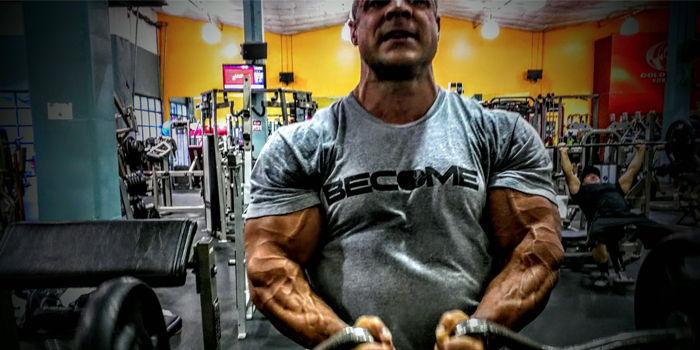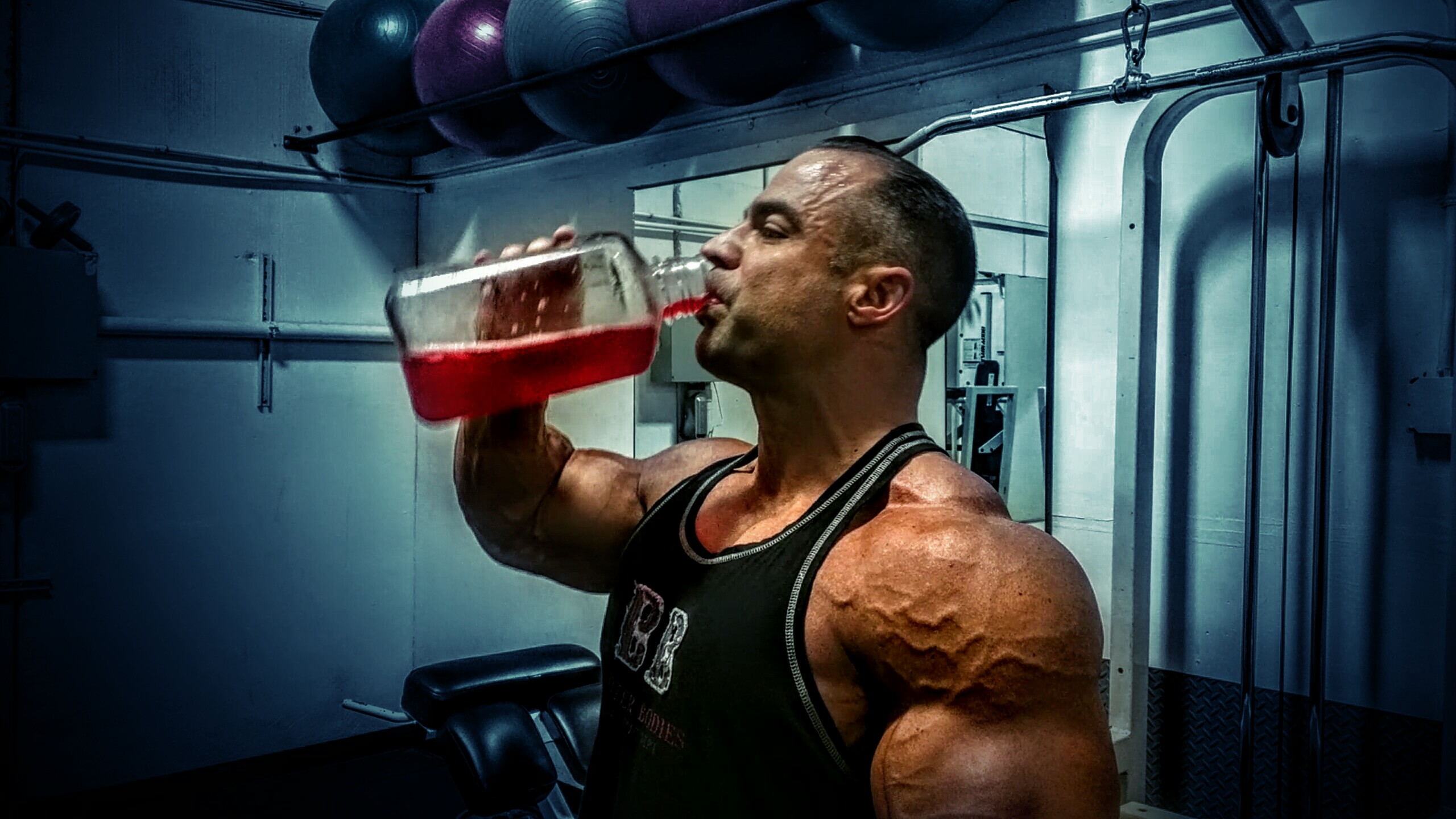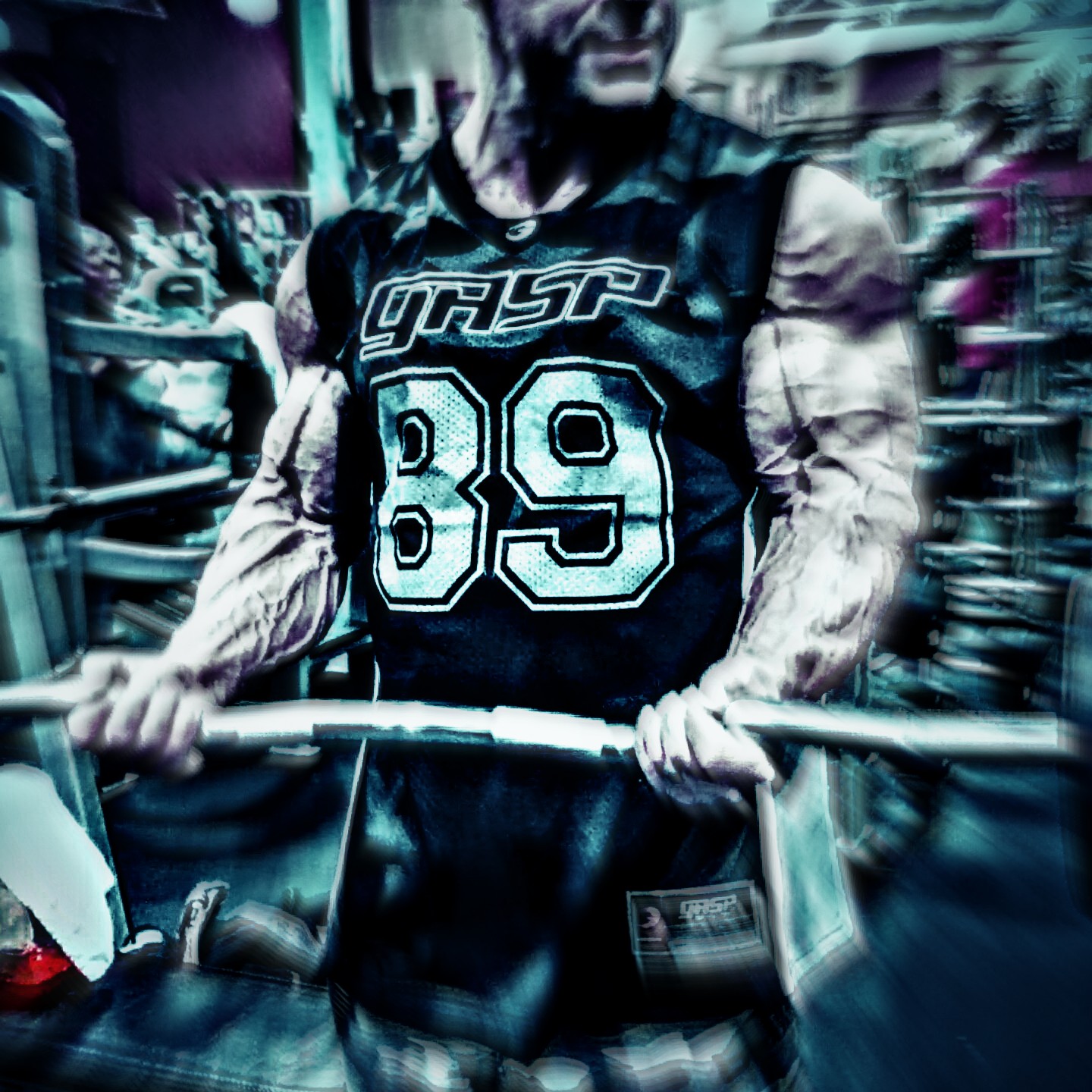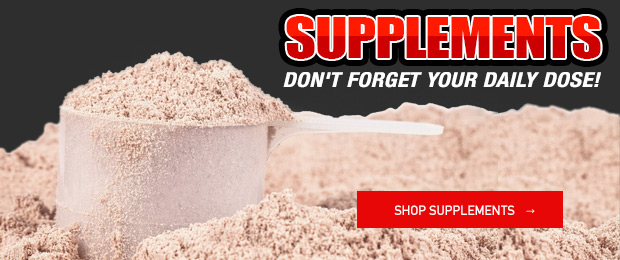
What’s the fascination with biceps? Seriously. Quick on the heels of a teenage boy’s rise in testosterone comes his desire for bigger biceps, perhaps because biceps are the one muscle group easily visible in a t-shirt or tank top. Believing the line of thinking associated with the often heard saying Curls for the Girls, you would assume guys do it to get girls. Honestly, before working on this article, I wasn’t even sure if girls like guys with big biceps. I asked the four with whom I share a residence and got this response: "Sure there’s some relevancy to the statement ‘curls for the girls’ but don’t overdo it. Bigger biceps are cool only if you’re attractive to begin with.”
Ok, ok. Probably not totally appropriate samplings of girl opinions as the aforementioned four all share my last name; however, winning a girl on biceps alone likely isn’t happening, fellas. I’m going to simply leave the why alone. Answering it probably won’t be helpful to the fact that most gym-familiar dudes want bigger biceps regardless of girls noticing. So let’s get to the heart of this article: How can you build bigger biceps? I’m going to attempt to distill my 23 years of training experience into a practical approach.
I always possessed a fairly balanced and aesthetic physique, but during my amateur and early professional years competing, one common complaint from judges kept surfacing: "you need bigger arms." I’m going to tell you what helped me turn a perceived weaker body part into at least a more proportionate one…if not a strong one. I plan to focus on biceps, but don’t lose sight of the fact that the majority of a massive arm circumference includes the triceps. Much of the principles I suggest apply equally to triceps, but the primary focus here is biceps.
Tip 1: Pre/Intra-Workout Nutrition
All the blood, sweat, and tears shed on the gym floor in the pursuit of bigger biceps won’t matter much if you don’t give your body what it needs to put all your hard work into motion. Training is catabolic and tears down muscle, so only those who support the regrowth and adaptation fondly referred to as muscle hypertrophy will see the fruit of their labor. Don’t lose sight of this fact. If you’re training with nothing more than water in your bottle you’re doing it wrong — not to mention, post workout dextrose and protein is yesterday’s science. If post workout nutrition is still your answer then you’re probably still wearing stringer tank tops and leopard print Hot Skins fashionably adorned with a fanny pack.
Pre- and intra-workout nutrition is so vitally important to me that I simply won’t train without it. Anyone in my training circle agrees, including my wife. She forgot her bottle of Plazma on the way to the gym last week and purchased a bottle of Gatorade with disappointment spread across her face saying, “Oh well, something is better than nothing!” Don’t skip pre/intra-workout nutrition.
Tip 2: Get Over Yourself
You realize it’s ego that leads you to pick up those dumbbells more suited for your bench press than your biceps curls, right? A massive squat or deadlift is impressive to me, but a massive barbell curl? Not so much. I still get the draw; I won’t lie and say I never did 90-pound dumbbell curls or 405-pound close-grip bench with a ton of assistance from training partners to the detriment of healthy elbows and wrists. Moving really heavy weight intelligently on major compound movements has its benefits, but I learned over the years that heavy weights did little to elicit hypertrophy with arm training — joint inflammation for sure, but very little muscle growth. Ditch the ego and drop the desire to move X amount of weight from point A to point B. The pump is closer to the Holy Grail than the poundage employed.
Tip 3: Pump It Up
Training in such a manner as to flood the biceps with so much blood that you curse the day you were born is the type of pump I’m talking about. It does not take super heavy weight either. Here are a few techniques I share a love/hate relationship with because they really trigger muscle growth, but hurt like crazy. These are some of my favorites:
Occlusion Training
The idea behind blood flow restriction (occlusion) training is to trap blood in the targeted muscle to the point you want to cry. Lactic acid and other byproducts build up as arteries pump blood to the working muscle, but blood flow restriction prevents it from returning to the heart. The lactic acid triggers protein synthesis and when the blood restriction is removed a flood of growth factors and fresh blood engorges the muscle. Using something like a pair of METAL wrist wraps up near the shoulder (above biceps) works pretty well for me. The key is to wrap the upper arm, pump the biceps, briefly rest without removing the wraps, pump the biceps some more, repeat, etc. Here is a video from a previous workout:
Jettison Curls
Extending a set beyond the normal stopping point, be it from muscle failure or otherwise, lends itself to a bigger pump. Additionally, overloading the muscle in the flexed position by forcing a more intense peak contraction facilitates larger pumps. Jettison curls employ each of these principals into one exercise sequence. All you need is an EZ curl bar and a Pro Mini Resistance Band. The key is to perform curls with the bar and the band, then jettison the band and curl with just the bar, and finally jettison the bar and curl just the band. Here is a video from a previous workout.
Tip 4: Hammer the Brachialis
The brachialis is a relatively small muscle under the biceps and visible between your biceps and triceps when you flex your arm. A highly developed brachialis aids the illusion of big arms, but is often undertrained and neglected. The best way to hit it is via reverse or hammer curls. However, here is where tip #2 from above really comes into play: nothing inflames my elbows more than going too heavy on the aforementioned exercises because they require the activation of wrist extensors and flexors which can easily flare up tendonitis. With this in mind, the elitefts Multigrip Log Bar is my go-to favorite exercise. I prefer to vary my grip and/or extend sets by changing my hand placement.
Here is a sample video:
Tip 5: Increase Frequency
Central nervous system (CNS) burnout is often a symptom of overtraining, particularly with frequent, heavy compound movements taken to failure. Taxing the CNS with arm training isn’t typically of high concern. This is especially true if you follow tip #3 above and train for maximal pump vs. setting powerlifting records with barbell curls. Furthermore, from my experience, small muscle groups tend to recover quicker than large muscle groups making them prime candidates for increased training frequency. This is only possible if you’ve mastered tip #1.
Assuming you train for a pump and covered your intra-workout nutrition, I suggest performing direct biceps work twice per week. This is easily accomplished by adding biceps focused exercises to the tail end of back training if your current split includes a separate, dedicated arm day. Training biceps following back training has a few advantages.
- Your biceps are already plenty warm so you can skip the time it normally takes to adequately warm up the elbow joints.
- The biceps are pre-fatigued so the time needed to achieve maximum pump is shorter.
- Pre-exhausted biceps require less weight which means less stress on the joints. I like reps in the 6-12 range and a total of 8-12 working sets.
Conclusion
Whether you’re curling for the girls or not doesn’t particularly matter. The allure of bigger biceps captures most males at some point in their life. The big take-away in terms of what training 20+ years taught me is that biceps are a unique muscle group. The same principle applied to other major muscle groups often fails to translate well to biceps. The keys to unlocking hypertrophy from my experience trace their roots to pre/intra-workout nutrition proficiency, using lighter weight, training for a pump, ensuring the brachialis is adequately stimulated, and increasing the frequency in which biceps are trained on a weekly basis.













I am a huge proponent of eating whole, organic food as the foundation of your diet. I differ in regards to pre/intra nutrition being a myth. Casein hydrolysate hits the blood stream much faster than whole food protein and the same is true for cyclic dextrin over other carb sources. Yes, anecdotal evidence supports the fact that before employing pre/intra nutrition I trained 4 days a week and now train 6-7 days a week.
All the best,
Mark
I personally use between 2 and 4 servings of Biotest Plazma which equates to between 30-60 grams of protein and 76-152 grams of carbs. Amount of servings depends on what I am training. A long, 2 hour, Mountain Dog leg workout would be along the lines of 4 servings of Plazma.
Hope this helps!
Mark
The whole idea seemed like voodoo science to me initially, but the pump changed my mind. As I said in the article I feel like the pump is the key to arm growth and nothing blew my arms up quite like occlusion work.
Check out EliteFTS floss bands as Will suggested previously...I'm going to get myself a pair!
All the best,
Mark
very nice article. Like it a lot.
Do you think it`s better to use Back and Chest as "pre exhaustion" for arms and drop the training weight or go a little heavier (not too heavy) with a separat arm day?
I always feel like I would miss something if I have to drop the weights when I train Push/Pull/Legs.
All the best,
Mark
The last 8 months or so I've been training biceps twice per week - 1) immediately following my primary back day and 2) immediately following my secondary/pump back day. The same with triceps at the end of my chest and shoulder workouts. When John first suggested this set-up as opposed to a dedicated arm day I protested, but now I prefer it - ha! What I like about it is I can go right into working sets without having to do a lengthy warm-up. The overall weight is less, but I still feel like I get equal if not better muscle stimulation.
Hope this helps,
Mark
All the best,
Mark